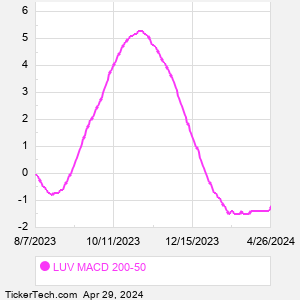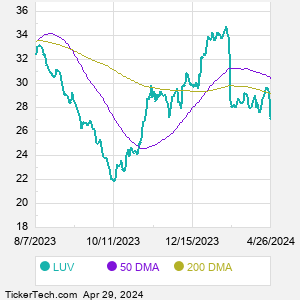Southwest Airlines operates Southwest Airlines, a passenger airline that provides scheduled air transportation in the U.S. and near-international markets. Co. principally provides point-to-point service. Co. complements its short-haul routes with long-haul nonstop service including flights between Hawaii and California, Las Vegas, and Phoenix, and between markets such as Los Angeles and Nashville, New York LaGuardia and Houston, Los Angeles and Baltimore, Oakland and Houston, and San Diego and Baltimore. Co.'s fare products include three primary categories: Wanna Get Away®, Wanna Get Away Plus, Anytime, and Business Select®, to provide Customers options when choosing a fare.
When researching a stock like Southwest Airlines, many investors are the most familiar with Fundamental Analysis — looking at a company's balance sheet, earnings, revenues, and what's happening in that company's underlying business. Investors who use Fundamental Analysis to identify good stocks to buy or sell can also benefit from LUV Technical Analysis to help find a good entry or exit point. Technical Analysis is blind to the fundamentals and looks only at the trading data for LUV stock — the real life supply and demand for the stock over time — and examines that data in different ways. One of those ways is to calculate a Simpe Moving Average ("SMA") by looking back a certain number of days. One of the most popular "longer look-backs" is the LUV 200 day moving average ("LUV 200 DMA"), while one of the most popular "shorter look-backs" is the LUV 50 day moving average ("LUV 50 DMA"). A chart showing both of these popular moving averages is shown on this page for Southwest Airlines. Comparing two moving averages against each other can be a useful visualization tool: by calculating the difference between the LUV 200 DMA and the LUV 50 DMA, we get a moving average convergence divergence indicator ("LUV MACD"). The LUV MACD chart, in conjunction with the chart of the moving averages, basically helps in visualizing how the moving averages are showing convergence (moving closer together), or divergence (moving farther apart). |



